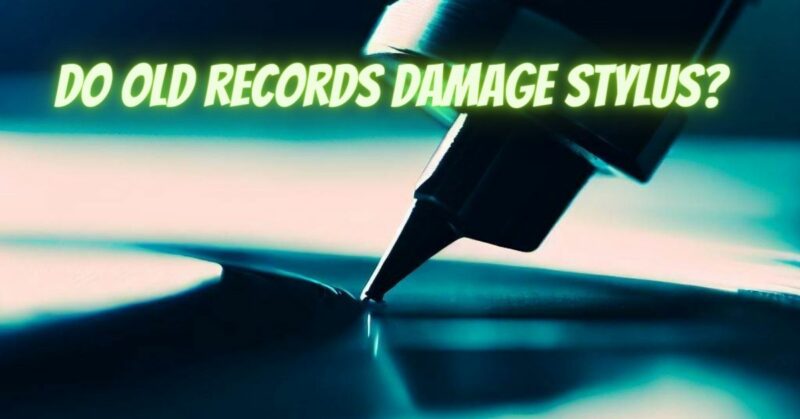Vinyl records have a timeless charm and a devoted following among audiophiles and music enthusiasts. However, one concern that often arises when playing old records is whether they can damage the delicate stylus (needle) of your turntable. In this article, we’ll explore the relationship between old records and stylus wear, helping you understand how to enjoy your vinyl collection without compromising your turntable’s needle.
The Components at Play
To grasp the potential impact of old records on your stylus, it’s essential to understand the key elements involved:
- Stylus (Needle): The stylus is the tiny, pointed component that makes direct contact with the grooves on your records. It translates the physical grooves into electrical signals that produce sound.
- Vinyl Records: Vinyl records are composed of polyvinyl chloride (PVC) and contain grooves that carry the recorded music. Over time, these grooves can accumulate dust, debris, and wear.
Factors That Can Affect Stylus Wear
Several factors can influence the extent to which old records affect stylus wear:
- Record Condition: The condition of your old records is a critical factor. Records with excessive scratches, scuffs, or groove damage can accelerate stylus wear.
- Dust and Debris: Dust and debris on the record’s surface can be abrasive and may increase stylus wear. Cleaning your records before playback is crucial.
- Storage and Handling: Proper storage and careful handling of records can minimize wear and damage. Records stored in dusty or humid environments may be more prone to wear.
- Tracking Force: The tracking force, or the pressure with which the stylus contacts the grooves, plays a significant role in stylus wear. Excessive tracking force can accelerate wear and reduce stylus lifespan.
- Stylus Material and Quality: The material and quality of the stylus tip can affect its durability. High-quality materials, such as diamonds or sapphires, tend to last longer.
- Alignment and Setup: Proper alignment and setup of your turntable’s tonearm and cartridge are essential. Misalignment can cause uneven stylus wear.
- Record Cleanliness: Regular cleaning of records can remove abrasive particles and debris, reducing the likelihood of stylus damage.
Do Old Records Damage Stylus?
Old records, in and of themselves, do not inherently damage the stylus. It’s the condition of the records and the factors mentioned above that play a more significant role. If old records are well-preserved, free from excessive wear and damage, and properly cleaned before playback, they should not significantly accelerate stylus wear.
However, it’s important to note that playing damaged or poorly maintained records, especially those with deep scratches or grooves filled with debris, can increase the risk of stylus damage. In such cases, the stylus can become more susceptible to wear and may need more frequent replacement.
Tips for Preserving Your Stylus and Records
To enjoy your old records without worrying about stylus damage, consider the following tips:
- Inspect Your Records: Examine old records for visible wear, deep scratches, or signs of damage before playing them.
- Clean Your Records: Use a record cleaning brush or a dedicated record cleaning machine to remove dust and debris from the surface of your records.
- Proper Turntable Setup: Ensure that your turntable is correctly calibrated, and the tracking force and anti-skate settings are within the manufacturer’s recommendations.
- Handle Records Carefully: Always handle records by the edges to prevent fingerprints and minimize the risk of surface damage.
- Invest in High-Quality Stylus: Consider upgrading to a high-quality stylus with a durable tip material, such as diamond or sapphire.
- Replace the Stylus When Needed: Regularly inspect and replace the stylus when it shows signs of wear, damage, or deterioration.
Old records can be a treasure trove of music history, and with proper care and maintenance, they can be enjoyed without causing significant harm to your turntable’s stylus. By inspecting your records, keeping them clean, and ensuring your turntable is properly calibrated, you can continue to relish the unique warmth and character that vinyl records offer while preserving the longevity of your stylus.


